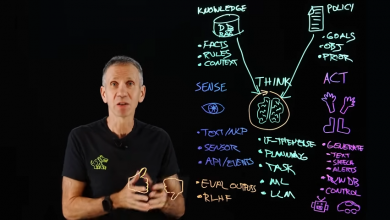What Are Large Reasoning Models (LRMs)? Smarter AI Beyond LLMs
At their core, LRMs integrate advanced techniques like extended chain-of-thought reasoning, self-verification, and programmatic execution.
 Large Language Models (LLMs), such as GPT-4 or Claude 3.5, excel at generating fluent, human-like text by predicting the next word based on patterns in vast datasets.
Large Language Models (LLMs), such as GPT-4 or Claude 3.5, excel at generating fluent, human-like text by predicting the next word based on patterns in vast datasets.
However, they often struggle with true reasoning, especially on novel or complex problems, because they rely on statistical recall rather than structured logic.
Large Reasoning Models (LRMs) mark a significant evolution, designed specifically to think step-by-step, verify conclusions, and explore alternative paths before responding. Unlike LLMs, which prioritize linguistic fluency, LRMs focus on logical inference and problem-solving accuracy.
At their core, LRMs integrate advanced techniques like extended chain-of-thought reasoning, self-verification, and programmatic execution. They break problems into explicit steps, generate multiple solution paths, and discard flawed ones—much like a human expert backtracking in thought.
Many LRMs even write and run code to solve mathematical or logical challenges, ensuring precision over guesswork. Models like OpenAI’s o1, released in 2024, pioneered this approach by internally simulating minutes of reasoning, dramatically outperforming traditional LLMs on PhD-level science, competitive math, and coding benchmarks.
While slower and more resource-intensive than LLMs, LRMs shine in domains requiring rigor—proving theorems, diagnosing edge cases, or planning long-term strategies. They still falter on commonsense intuition or real-world physics, but they close critical gaps in formal reasoning.
Looking ahead, the most capable AI systems will likely combine fast LLMs for drafting and communication with deliberate LRMs for verification and deep analysis. In essence, LLMs speak like humans; LRMs think like them. This shift from language generation to structured cognition defines the next frontier of artificial intelligence.



